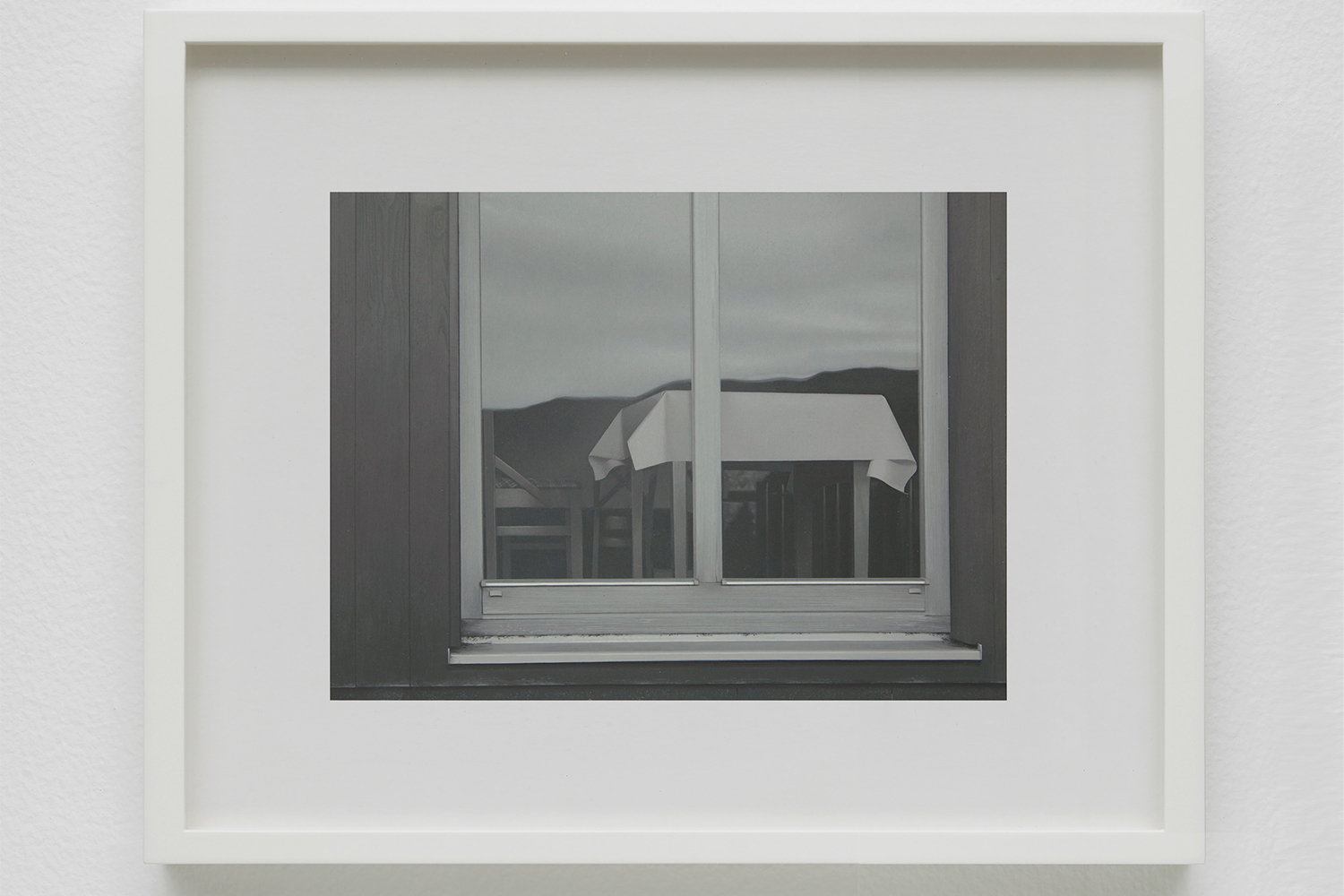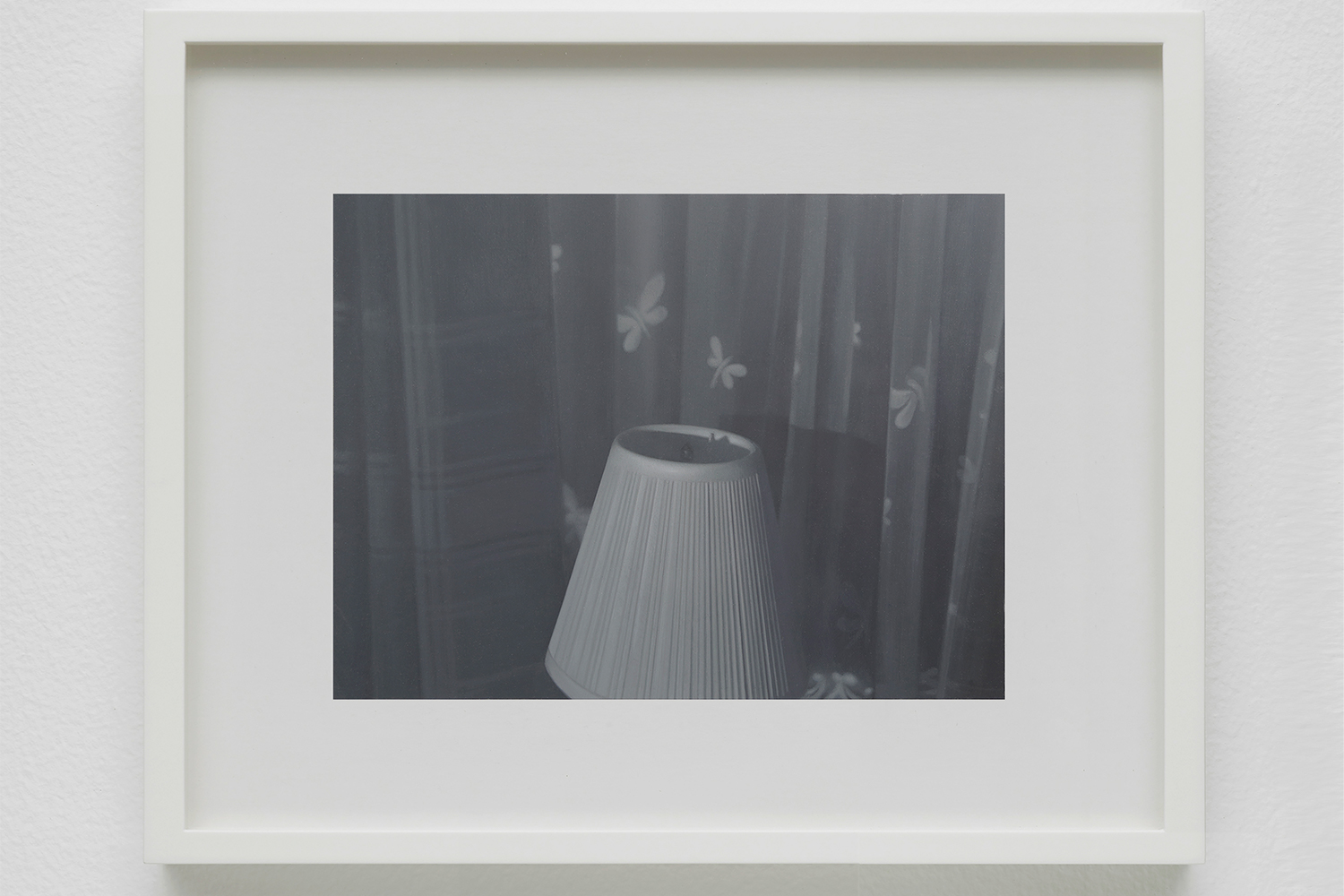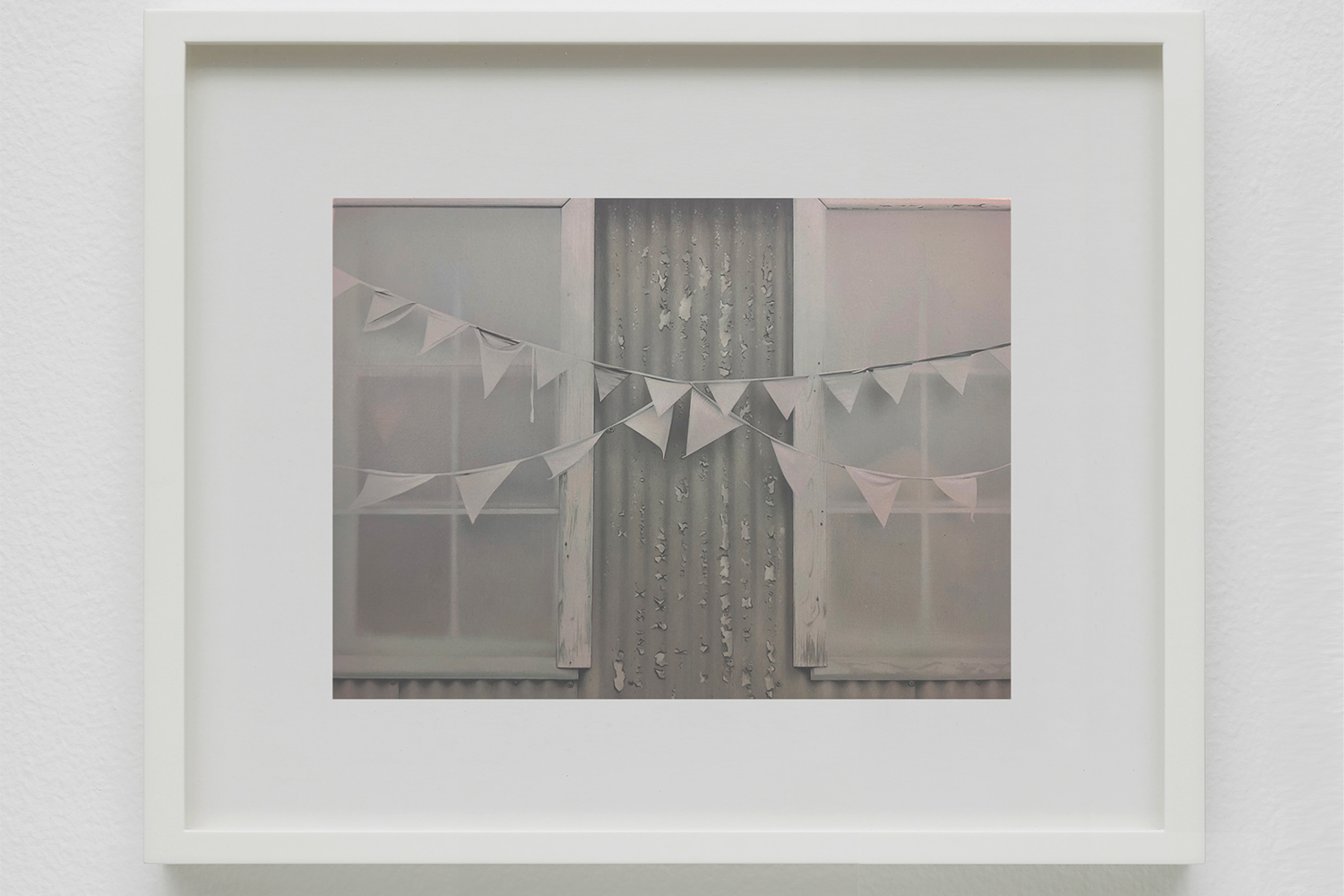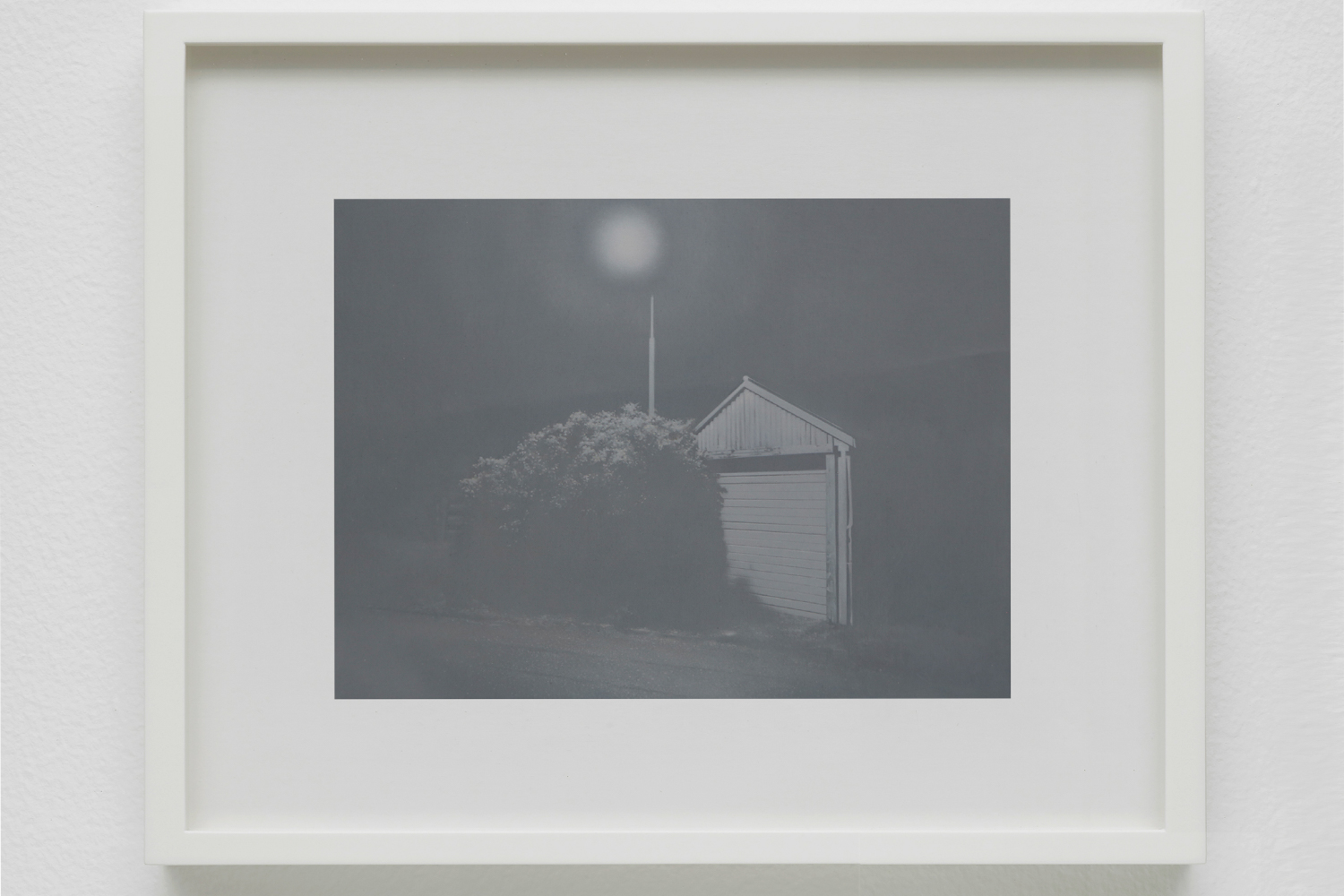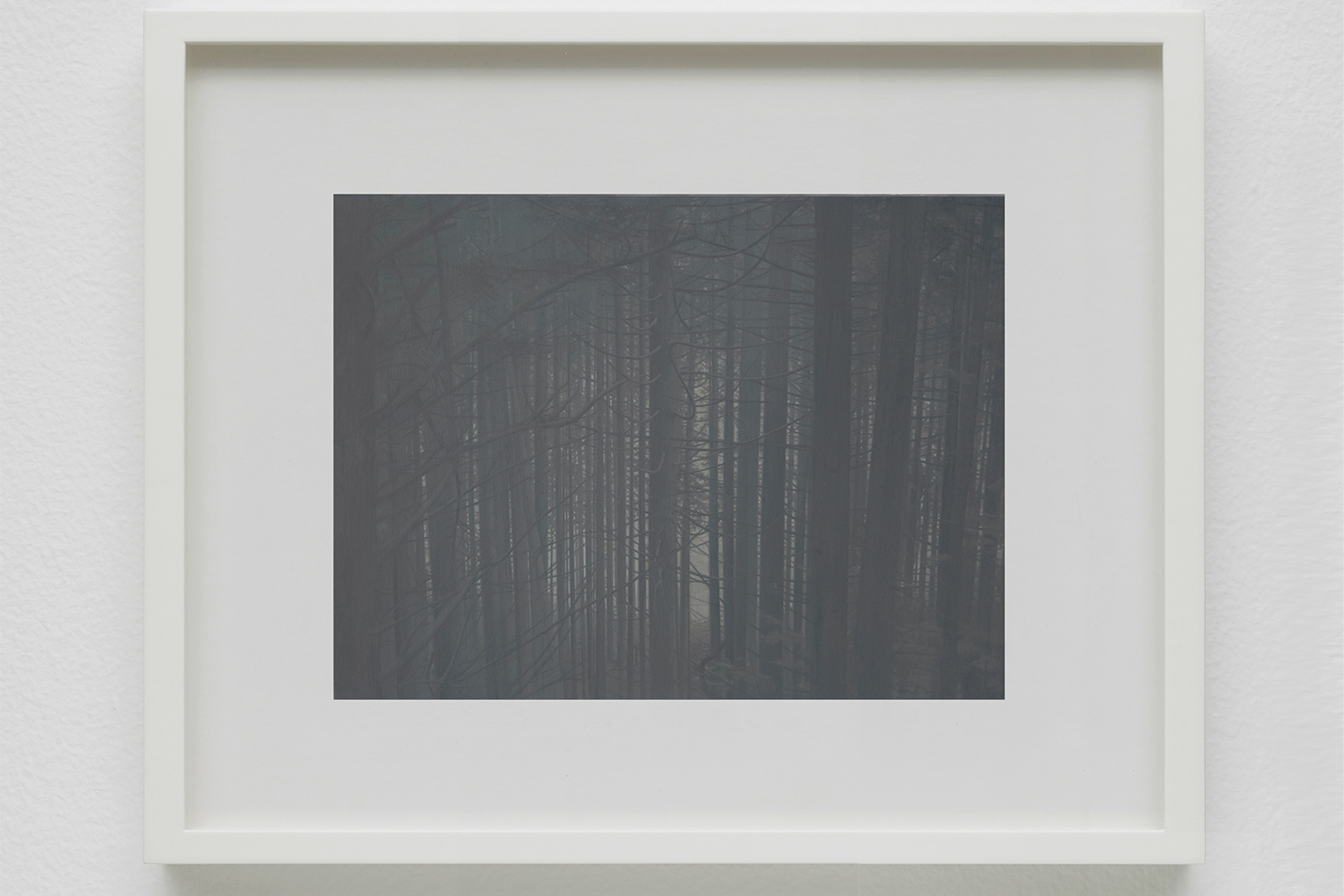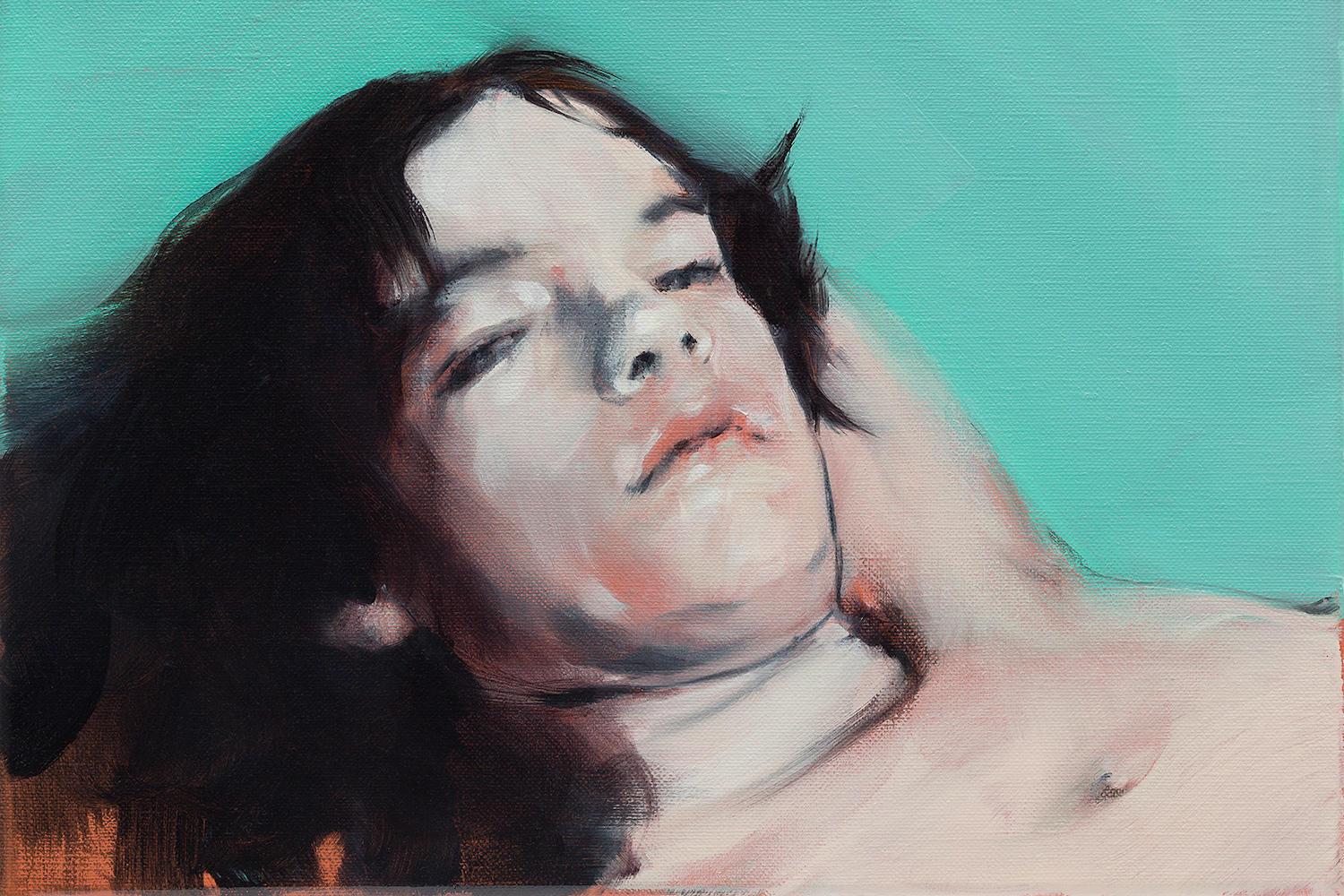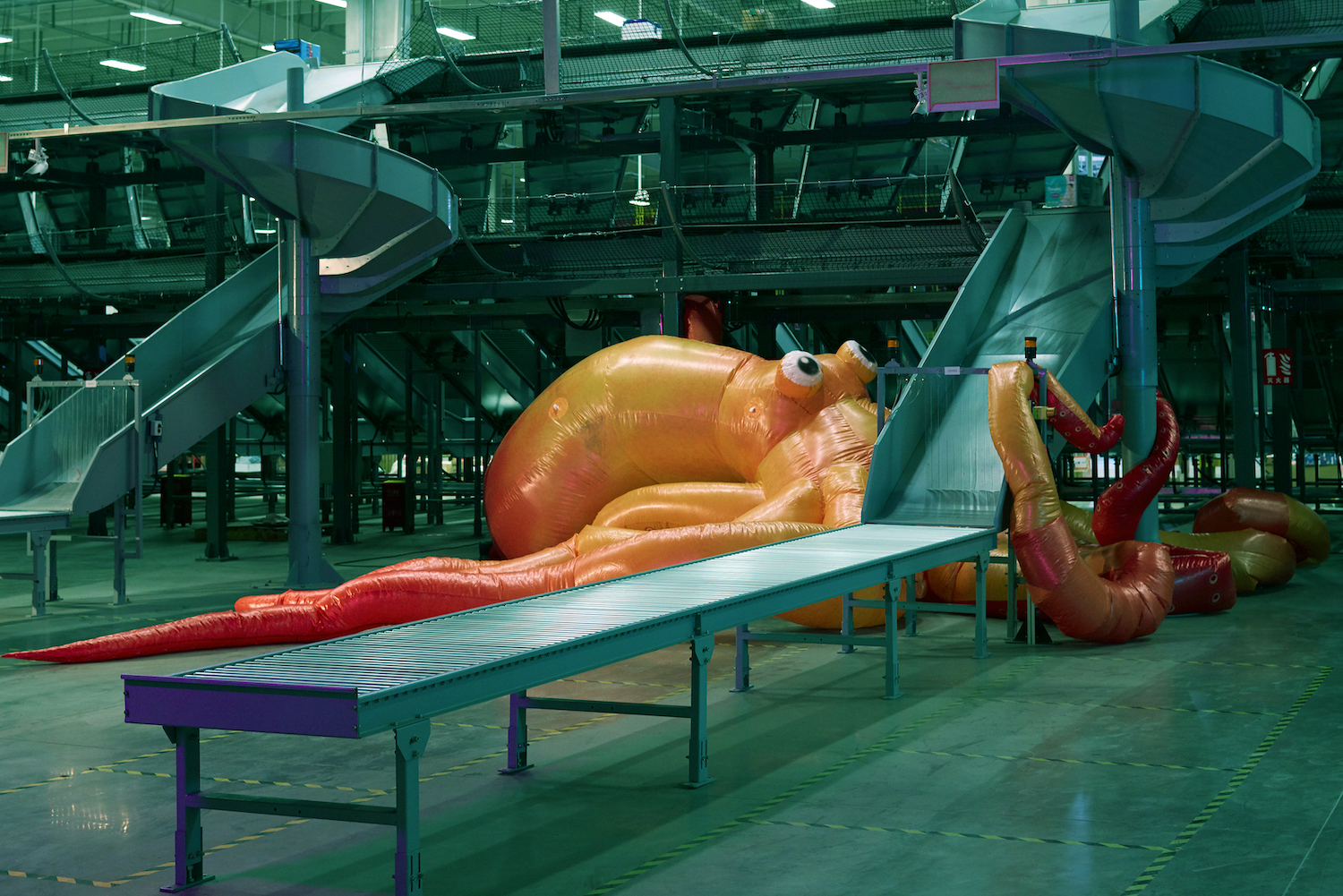Andrew Grassie’s meticulously detailed egg tempera paintings shape the observer’s experience of looking and interpreting images. His latest group of paintings are informed by repeated visits to the Scottish Highlands over the last two years, specifically to the fabled area around Loch Ness and nocturnal walks within the area. His observations capture the placid waters, outbuildings and forests around the loch and are imbued with the intricacies of solitude found in city architecture as experienced under pools of artificial light. Working in a deceptively monochromatic palette, Grassie overlays thinly applied veils of complementary colours to achieve a close tonal range that floats between the sensation of day and night, inside and outside – illuminating and obscuring from within. His tightly framed compositions confuse an easily recognized sense of perception, time, and location with a desire to question the reliability of living memory and the readability of the repurposed image.
“A man looks over the loch with expectant attention. He scans the impermeable grey surface through his binoculars, waiting in vain for some extraordinary event to take place. This is the scene from the authorless photograph from Loch Ness I’ve had pinned to my studio wall for several years. It dawned on me that this man and I had a lot in common. He was patiently investing his time and attention scanning the opaque grey waters in the hope that there might be something there and that he might be witness to it. Perhaps this was not so different from a painter like me, reproducing photographs, hoping that in that very act of duplication something surplus may appear. If indeed we were both searching for something that didn’t exist, it was also true that we suspended our disbelief to revel in the act of looking, deliberately prolonging this ritual beyond that which was strictly necessary.”
– Andrew Grassie, 2022

